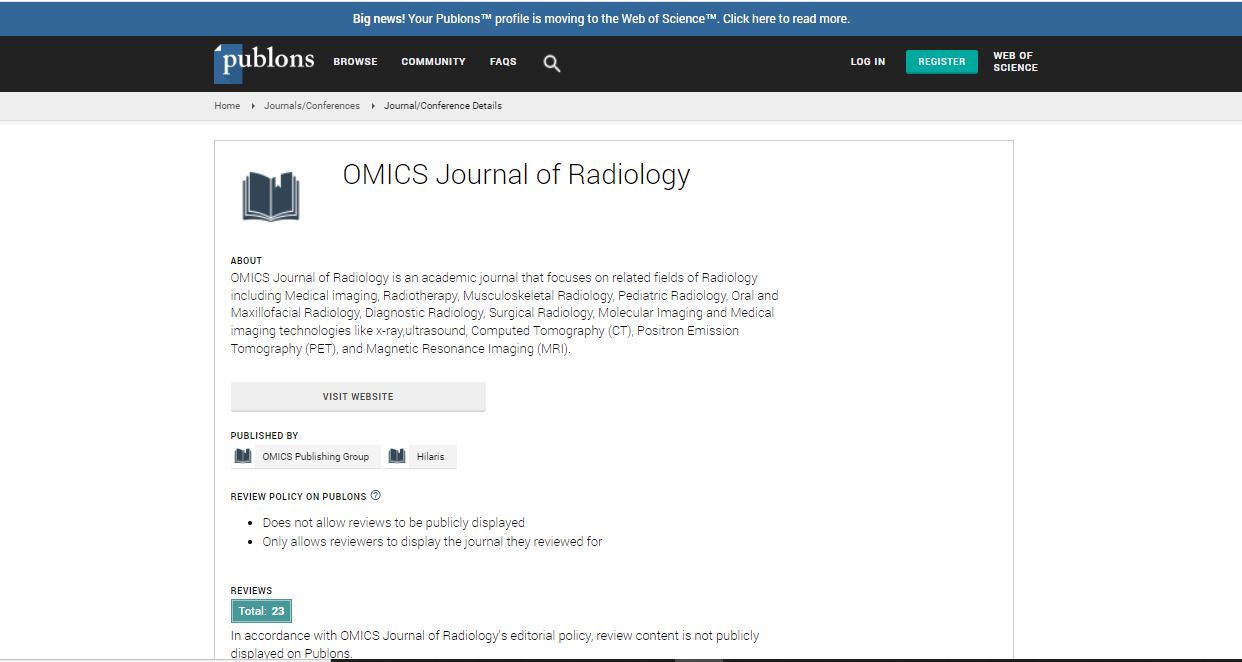Research Article
Our Clinical Experience on Uterine Artery Embolization for the Treatment of Uterine Fibroids: A Retrospective Case-Series of 32 Patients
Isil Yildiz*Department of Radiology, Acibadem University Atakent Hospital, Istanbul, Turkey
- *Corresponding Author:
- Isil Yildiz
Department of Radiology, Acibadem University Atakent Hospital
Istanbul, Turkey
Tel: 905323560244
E-mail: drisilyildiz@gmail.com
Received date: July 11, 2017; Accepted date: July 31, 2017; Published date: August 04, 2017
Citation: Yildiz I (2017) Our Clinical Experience on Uterine Artery Embolization for the Treatment of Uterine Fibroids: A Retrospective Case-Series of 32 Patients. OMICS J Radiol 6:268. doi: 10.4172/2167-7964.1000268
Copyright: © 2017 Yildiz I. This is an open-access article distributed under the terms of the Creative Commons Attribution License, which permits unrestricted use, distribution, and reproduction in any medium, provided the original author and source are credited.
Abstract
Purpose: To present our experience on uterine artery embolization performed in patients with uterine fibroids.
Materials and methods: Thirty-two patients (mean age, 37 years) with symptomatic fibroids who underwent uterine artery embolization in our clinic between July 2014 and May 2015 were retrospectively analyzed. Uterine and fibroid volumes were determined by T1-weighted MR images. The change in symptoms after procedure and the severity of postprocedural pain were assessed by patients.
Results: Median follow-up period was 23 months (range 21-30 months). None of patients had menorrhagia, 79% had less menstrual pain, and 82% had less or none abdominal bloating or swelling during follow-up. The mean volumes of uterus and largest fibroid decreased 55% and 66% after embolization, respectively. The rate of patients who satisfied with the procedure was 97%. Majority of women (81.3%) had severe pain which lasted for 4.0 ± 3.0 days. They returned to daily acitivities within 5.0 ± 1.1 days, and to work within 7.0 ± 2.1 days. None of patients had persisting discharge, permanent amenorrhoea, or infective complications.
Conclusion: Uterine artery embolization is an effective and safe treatment alternative for ymptomatic uterine fibroids provided that an extensive clinical and radiological evaluation is performed. Early postprocedural period can be painful, but pain resolves fast.

 Spanish
Spanish  Chinese
Chinese  Russian
Russian  German
German  French
French  Japanese
Japanese  Portuguese
Portuguese  Hindi
Hindi 
